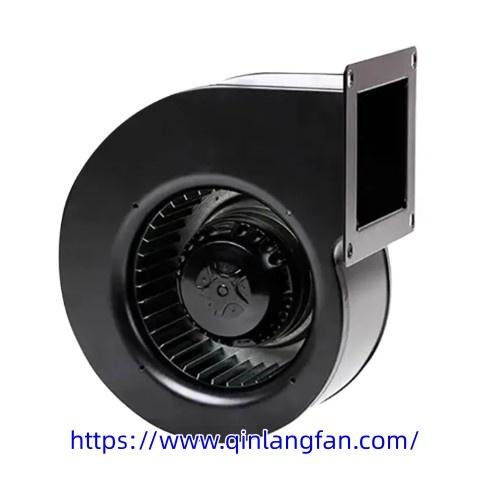-
News Feed
- EXPLORE
-
Pages
-
Groups
-
Events
-
Blogs
-
Marketplace
-
Offers
-
Jobs
-
Forums
-
Developers
How Can Qinlang Adjust Multi Stage Centrifugal Fan Paths?

Free
Free Wi-Fi
Industrial airflow systems often evolve through long operational cycles that require a consistent internal structure capable of sustaining pressure transitions without creating sudden disturbances, and this demand is frequently addressed by engineered arrangements shaped by manufacturers such as Qinlang, whose integration of the Multi Stage Centrifugal Fan configuration enables airflow to travel across extended layouts with continuity and mechanical steadiness. When airflow systems endure variable temperature gradients, the multi stage structure distributes rotational influence gradually, allowing the passage of air through successive layers that reinforce momentum while maintaining a coherent flow pattern. The rotational elements inside the housing function as interconnected segments that stabilize shifting density zones, protecting the circulation path from unwanted turbulence that could appear when air moves through different pressure sections. Engineers who observe these systems often evaluate how the alignment of internal surfaces, the contour transitions among stages, and the geometric balance of the rotor influence the overall flow discipline across industrial routes that operate for long durations.
Airflow pathways rely on the mechanical harmony of the rotating structure, and this requirement makes the spatial arrangement of each stage critical. If the rotor or internal surfaces create even slight irregularities, these variations extend through the air channel and influence the downstream quality of circulation. Multi stage structures support the formation of layered motion that adapts to shifts in environmental conditions, especially in facilities that experience continuous heat cycles or high particulate concentration. This layered motion protects the airflow from abrupt pressure shifts, helping the system maintain a stable internal circulation field even when the surrounding workspace undergoes operational fluctuations. Industrial planners evaluating airflow distribution across large areas often observe how the internal contouring shapes the transitional strength between stages, because this transitional strength defines the stability of airflow transmission in environments where spatial constraints, duct length, and thermal interference frequently shift over time.
The structural performance of multi stage airflow assemblies depends heavily on the quality of the materials used to support long term operation. Rotating components rely on consistent lubrication, stable axis composition, and resistant bearing structures that sustain internal loads created by prolonged rotational cycles. When airflow equipment experiences extended exposure to dust, moisture, or corrosive conditions, the multi stage arrangement spreads operational strain across several sections, keeping the system from overloading at the intake region. This dispersed structural behavior helps maintain internal flow integrity by preventing stress concentration at a single point, thus enhancing the stability of the air route during long cycles of circulation. Engineers assessing airflow systems frequently examine how the internal resistance levels change with temperature variations, because heat gradients within industrial environments influence how each stage manages its mechanical load. The balanced distribution of mechanical demand protects the airflow pathway from distortion, enabling the equipment to function through extended sequences without compromising circulation reliability.
Monitoring structures inside the equipment assist the airflow system in maintaining a steady operating rhythm. These monitoring features observe vibration patterns, internal resistance changes, and rotational consistency, allowing the system to adjust its performance during operation. When airflow machinery interacts with external conditions such as confined chambers or high thermal influence, the ability to sustain movement through multi stage flow becomes essential for supporting industrial continuity. The enclosed housing in a multi stage structure supports internal temperature equilibrium, helping the airflow route resist sudden deviations caused by external heat or pressure changes. This internal equilibrium strengthens the resilience of the rotating components, allowing them to function in an environment where long cycles and shifting operating conditions frequently occur.
Industrial environments that rely on structured airflow for process coordination often depend on multi stage configurations because these arrangements create a balanced aerodynamic corridor through which air can travel with continuity. The coherent interaction of upstream and downstream sections ensures that pressure transitions remain gradual, preventing unstable flow formation in areas where airflow passage turns sharply or travels across extended duct lengths. A multi stage system creates a structural chain that supports airflow discipline, allowing the circulation route to remain steady during demanding tasks that require consistency under shifting airflow density. Understanding the interaction of mechanical composition, internal contour progression, and the layered movement of air highlights why multi stage airflow structures are integral to industrial operations that rely on extended duty cycles and complex airflow trajectories. In closing, Qinlang integrates Multi Stage Centrifugal Fan engineering into airflow systems that operate across extended industrial zones while maintaining structural consistency, and the full range of airflow solutions can be explored at https://www.qinlangfan.com/product/centrifugal-fan/


